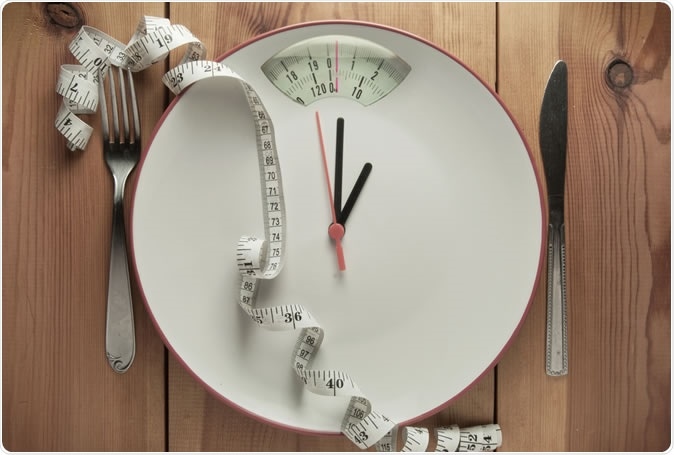A new study published in the journal JAMA Network Open on November 13, 2019, says that while more adults joined weight-loss programs in the period 1999 to 2016, the results weren’t quite satisfactory. People are heavier today, by about 2.8 Kg, on average, than at the beginning of the study, though about 42% of all people are trying to lose weight by diverse methods including dieting, exercise, cutting down on sweets and drinking more water.
Obesity is linked to multiple lifestyle diseases including cardiovascular ill-health, type 2 diabetes, and cancer. In fact, obese people die earlier, on average. On the other hand, reducing weight by even 3% to 5% is strongly linked to a reduced risk of diseases associated with obesity. The only problem is that losing weight is easy to decide on but difficult to achieve, for many people.

Image Credit: Pixelbliss / Shutterstock
The study
The study aimed to measure the trends in the body mass index (BMI), body weight, self-reported weight, how people perceived their weight, attempts to lose weight, and strategies to lose weight, among American adults. The data taken for the study was retrieved from the 9 consecutive data sets from the NHANES (National Health and Nutrition Examination Survey) database, from 1999 to 2016. All participants were above 20 years.
The findings
The study included over 48,000 participants aged 40-64 years. The male: female ratio was 1:1, and 45% of the participants were white. The analysis of the results showed that the BMI was rising, with the difference being 1.20 over this period. The current measured weight had gone up by 2.8 kg, on average, over this period. The mean difference between the measured and self-reported weight was 0.70 kg.
When they looked at the subgroup who attempted to lose weight, the BMI trend remained positive with a mean difference of 1.2, while the current measured weight moved up at a mean difference of 2.5 kg. The mean difference between measured and self-reported weight was also increased, at 0.55 kg. This difference was higher among those who did not try to lose weight (0.85 kg).
Among people with a high BMI in general, fewer people currently considered themselves as being overweight, while more people thought of themselves as underweight or the right weight. The mean difference was 3%. Overall, 8% more of participants began to try to lose weight, up from about 34%. This might reflect current social pressure to be fit and slim. Most of these attempts were by dieting, which went up from 21% to 32% for a difference of 11%. However, there was no significant trend when it came to lowering calories, despite the well-known fact that this is a tested and proved way to lose weight.
Exercise was another popular option, which went up by 14%, from the earlier 18%. Here again, an earlier study dating from 2008 shows that 65% of American adults say they exercise as much as they should, but only 5% actually do when objective assessment is carried out. This is supported by a 2018 statement by the American Heart Association that 80% of American adults do not engage in aerobic or isometric exercise.
Many more people started to drink water more often, for a difference of 26% from the early 0.2%. Fruit and vegetable consumption increased steeply, including salads, from 0.1% to 29% (a mean difference of almost a third, at 30%). Eating habits changed by 20%, and about 22% more people started to cut down on sweets.
Implications
Despite an increased number of heavy and overweight people, a greater proportion of people today are trying to lose weight. However, the contradictory findings suggest that in many cases the intention to lose weight is not carried out in a meaningful way. Another way of looking at this finding is that those who are attempting to lose weight may not actually be those who most need to do it. Reducing energy intake, especially from carbohydrates, adopting meaningful diets and sticking to them, and engaging in muscle-building exercise are all challenges that need to be met to achieve effective weight loss. To support such attempts more fruitfully, individual preferences and physical ability into consideration to create an individualized weight loss program.
Journal reference:
Han L, You D, Zeng F, et al. Trends in Self-perceived Weight Status, Weight Loss Attempts, and Weight Loss Strategies Among Adults in the United States, 1999-2006. JAMA Netw Open. 2019;2(11):e1915219. doi:https://doi.org/10.1001/jamanetworkopen.2019.15219, https://jamanetwork.com/journals/jamanetworkopen/fullarticle/2755311